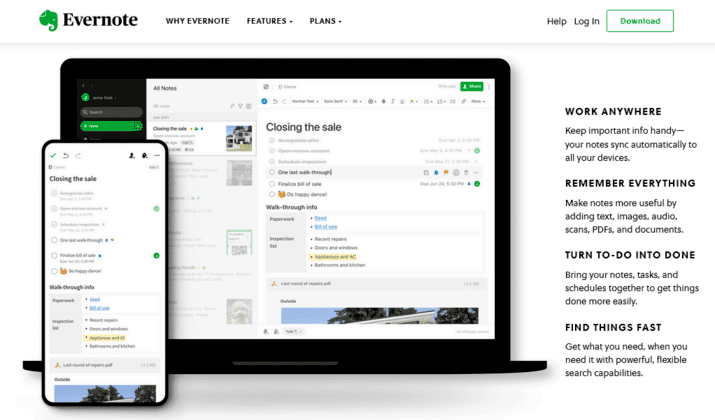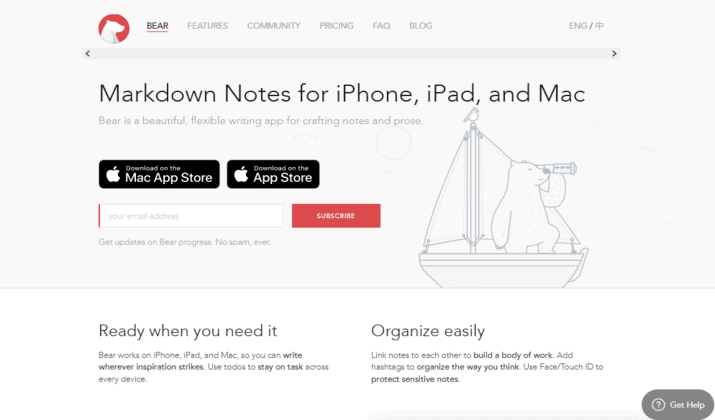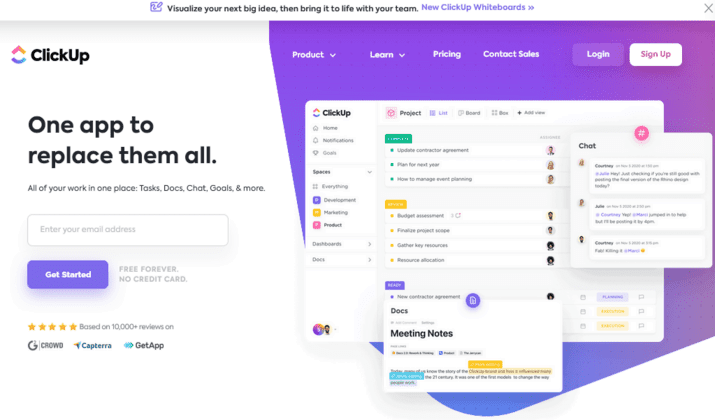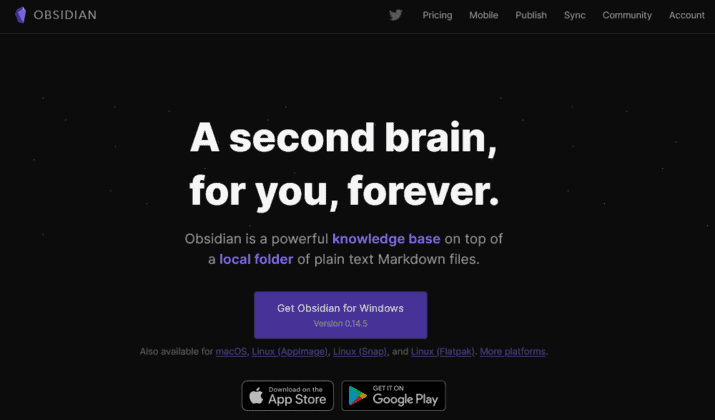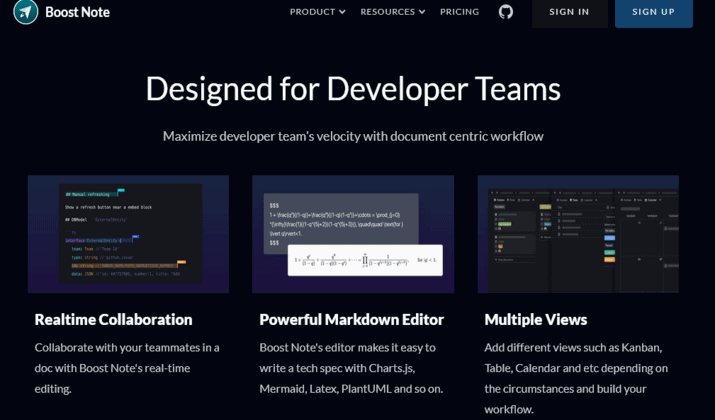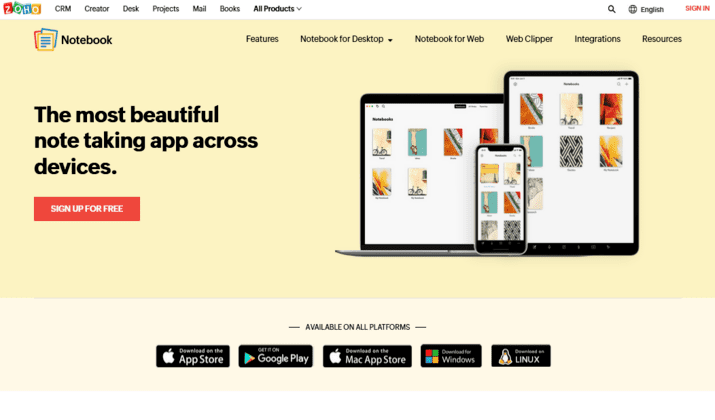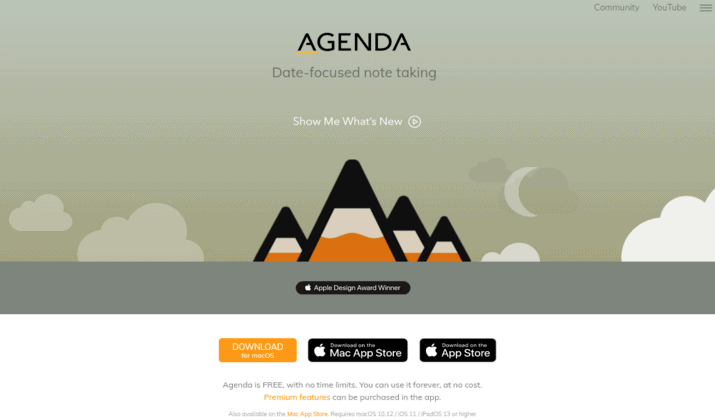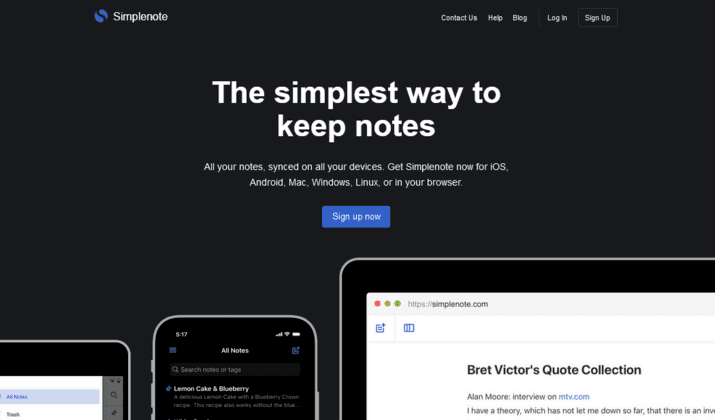Note-taking applications are useful tools that allow you to take notes, write down vital information, and generate memos, all from a single digital hub.
They’re available on a variety of mobile and desktop platforms, with some applications allowing you to save important data and sync it across devices and operating systems.
Microsoft OneNote is undoubtedly one of the best note-taking tools in the world. It’s available as part of the broader Microsoft 365 bundle on iOS, Mac, Android, and Windows.
It is supported by extensive functionality, an excellent user experience, and the power of the Microsoft ecosystem. It also has a friendly user interface with excellent design.
Initially meant for Windows users, OneNote for Mac was released in March 2014.
However, Mac users tend to run into issues with OneNote more often than not.
Syncing is a common one. Usually, you are required to sign in repeatedly to resolve this error.
Another common one is the crashing problem. This issue could stem from the entire Microsoft Suite and not OneNote per se. Nonetheless, it’s not cool.
Worse even, OneNote could stop working properly (like you have in cases where the search function stops working), or simply stop working altogether.
While OneNote is a great application, it may not be perfect for Mac users and can still be slowed down by bugs.
Here are 15 OneNote alternatives that work better with Mac.
Best OneNote Alternatives For Mac
1. Notion
Notion is the first app on this list. It is one of the best OneNote alternatives for Mac, and it lives up to the hype.
Notion is more than just another note-taking app. It is also a productivity tool.
Notion lets you work with other people in real-time and manage project software that may be linked to databases and tasks. Over 50 apps can be integrated.
With Notion, you can generate full papers that are synchronized in the cloud and then link them right into your project management application with no hitch.
More remarkably, one feature that sets Notion apart from most note-taking applications is how much faster it operates and how quickly and effortlessly you can interlink pages.
Similar to OneNote, Notion contains a web clipper, which comes in handy when you need to save content from the internet.
Notion is free for one person, making it a great choice for freelancers who need to keep track of tasks and take notes at the same time.
But if you need to use it with your team, then you might want to go for the pro features. It’s going to set you back $4.
The team plan costs $8.
Then, there is the Enterprise plan. The price of the Enterprise plan depends on what is ideal for your company. To get a quote, you’ll have to contact their support.
To get a more detailed breakdown of their prices and their respective features, you can check their pricing page.
Check out this post to discover more tools like Notion.
2. Evernote
Evernote allows users to make, modify, share notes, and clip web content.
Much similar to OneNote, Evernote has a slew of cutting-edge features, such as enhanced searching, document scanning and annotation, optical character recognition (OCR), team collaboration, and administration tools.
Unlike OneNote however, Evernote includes a lot of note templates, primarily divided into three categories: Work, School, and Life. These templates make it easier to take notes fast.
These sample templates include personal planners, calendars, meeting agendas, blog post worksheets, habit trackers, and many more.
One of the outstanding features of Evernote is its impressive optical character recognition (OCR), which you can also find in OneNote.
With this feature, Evernote can search scanned photos of handwriting just as quickly as it can typewritten notes.
Evernote’s OCR is so good that it even recognizes words written in sloppy cursive handwriting. This serves people who prefer to digitize handwritten notes rather than create digital ones.
Even better, Evernote can distinguish 28 different typewritten languages and 119 additional handwritten languages.
You can get Evernote for free, but there are paid plans for advanced features, albeit affordable. You can check the entire price breakdown here.
Explore the best alternatives to Evernote here.
3. Apple Notes
Let’s take a break from the 3rd-party apps for a moment and take a dive into the native “Apple notes” that comes with Mac.
If you own a Mac, you already have Apple Notes. You don’t need to install it, pay for it, or even create a new account to get started. So if you are looking for OneNote substitutes for Mac, this is as natural as it gets.
But it has more to offer than just being a native app.
First off, the ease of access can’t be overlooked. The app loads instantly, and creating a new note is as fast as it gets.
If you drag images into your notes, they will appear immediately. You can also insert audio files, or attach any document to a note at an impressive speed.
Also, Apple Notes, in its simplicity, arranges notes into notebooks and organizes them by date. No tagging, and no universal search, which indicates it’s better suited for keeping track or record of what you are working on in the present.
On the upside, Apple Notes won’t give you the common problems you encounter on OneNote like sync errors, crash issues, and being asked to repeatedly sign in among others.
The memory offering, though, is similar to OneNote. Apple Notes is free at 5GB of iCloud storage, but if that won’t cut it for you, then you can consider their paid plans starting at $0.99/month for 50GB of iCloud storage.
4. Bear
Bear is an aesthetically-pleasing alternative to OneNote that will appeal to you. Oh! And it’s fast.
You’ll find a lot of Apple Notes’ features here too. And just like OneNote, Bear has a browser extension for clipping entire articles you find on the web.
There’s an option for writing in Markdown, if you’d like that, and you can export notes to other formats like PDF, HTML, DOCX, and even JPG files.
Organizing notes here is done differently – in the form of hashtags – which can be added to the note itself, just like you do on Twitter.
The hashtags are sorted alphabetically, by recent use, or by popularity. The hashtags appear in the left panel.
You can also organize it further using child tags. For instance, you could create a #personal hashtag and then use child tags such as #personal/receipts and #personal/vacation to organize it even more.
It might take some getting used to due to its unconventionality, but it’s a cool feature and comfortable to do once you get the hang of it.
Most of the features on Bear are free, but you can do so much more with Bear Pro.
Bear Pro offers advanced features like sync between all your devices, several beautiful themes, and even better export options.
Bear Pro offers two pro plans: $1.49 monthly with a one-week free trial and $14.99 annually with a one-month free trial.
Check Out: Best MultCloud Alternatives
5. ClickUp
ClickUp is another alternative to OneNote that takes notepads and project management to a whole new level.
It is a cloud-based platform for businesses and teams. It combines important business apps and consolidates company data into a single online solution.
With ClickUp, you can send and receive emails directly from “ClickUp tasks” and maintain all your conversations in one place.
You can choose from the 100 native integrations along with the thousands of integrations available through Zapier and Integromat. That’s something you won’t find on OneNote.
You can also set goals – daily, weekly, quarterly, and annual – manage them, and keep track of your accomplishments on the platform.
Even more, ClickUp has an online community where you can watch on-demand webinars, speak with a vetted ClickUp consultant, and connect with a customer support team.
You can also use templates from the Template Center or save custom templates for recurring workflows.
They offer a free plan with a lot of features. But you can get a lot more with their paid plans. You can check all their plans here.
Also Read: ClickUp vs Notion
6. Obsidian
Obsidian is another OneNote substitute for Mac but slightly different in that it’s structured in Markdown.
This means that if you stop using Obsidian, you will still have access to all of your notes. But don’t be fooled by the file format’s simplicity—Obsidian offers enough to be the database of your life.
The app provides a variety of structures, including a sidebar full of folders for organizing while also highlighting internal hyperlinks. The fundamental idea here is that you can write fresh notes regularly and then connect to them in other documents.
This generates an easy-to-navigate web of knowledge, with a handy keyboard shortcut for retrieving notes by name or contents. It’s similar to a personal wiki, but better.
Unlike OneNote, the interface is completely customizable, and you can have numerous notes open in the same window.
The more impressive feature, though, are the community plugins, which allow you to add features such as a calendar for daily journal entries or a full-fledged kanban board.
These plugins are free. Same for community support. But to get extra features, you will have to pick one of their paid plans.
7. Boost Note
Boost Note is a powerful, feature-rich markdown alternative to OneNote aimed primarily at engineers and their teams.
One superior feature it has over OneNote is being able to let teams collaborate on documents. Together, teams can create, edit, and co-author documents.
Boost Note lets you completely modify and control your workflow by integrating up to 3,000 additional tools and apps. You also won’t get that on OneNote.
You also get rich searchability options, a smart folder, and document-property capabilities, all enabled by its IDE-like UX.
Boost Note has impressive compatibility with Mac OS, so you don’t have to worry about any of the issues you get on OneNote.
Interestingly, the software keeps all changes in a document automatically, and you may roll back at any moment to check version history or revert changes.
That way you don’t have to worry about what you may have written wrong because you can always get access to it.
It’s worth noting that the length of the history depends on your subscription plan, but you get up to three days of history with the free plan.
Additionally, with the free version, you also get unlimited members, unlimited viewers, 100MB of storage, and 10MB per upload.
But with the paid plan, starting at $5/member per month, you get access to features like PDF exporting, 1GB storage, a support boost team, etc. Check their entire pricing breakdown here.
8. Zoho Notebook
Notebook, by Zoho Corporation, is another good alternative to OneNote.
Zoho Corporation is well-known for its powerful apps. And Zoho Notebook is another app that attests to that history of impressive efficiency.
One of the lovely features that Zoho Notebook has over OneNote is its “Smart Cards.” What “Smart Cards” does is simply format material into specialized cards, such as a video, recipe, and link.
There’s also a feature to create notes with shareable links that anybody with the link can access, pretty much as you have it on Google Docs.
Even better, they have included an importer tool for Evernote content.
Furthermore, the app includes several pre-designed note covers to help you beautifully construct your narrative. If you don’t like the pre-made designs, you can choose to make your own.
There is also a reminder function to ensure that none of your chores slip through the cracks. You can also set passwords for your individual notes.
As regards pricing, everything is FREE! Yes, you heard that right.
You can make as many notes as you want, although there’s a 5GB total limit for File Cards. There’s also a 1GB limit per file upload in Docs.
To get more storage, then you will have to pay $5 per month to increase the total storage to 100GB and the file limit to 5GB per upload.
9. Agenda
Yet another free alternative to OneNote that offers a lot of amazing features.
With Agenda, you can streamline all of your projects in such a way that increases your productivity tenfold.
The advanced text editor is one of the app’s standout features. It allows you to convert your text into a variety of forms, including Markdown and HTML
You can give your notes a suitable appearance based on the chosen subject, and sort your files into different categories so that you can find them quickly.
Another interesting feature it has over OneNote is being able to link your sticky notes to events in your calendar using the app.
Again, you don’t have to pay a dime to use all of these features.
10. Simplenote
Few Mac note apps (including OneNote) look as friendly as Simplenote. With an easy-to-use user interface, you won’t need much time to learn how to use the features.
Unlike OneNote, Simplenote has a focus mode. When you need to write with maximum focus, this feature comes in handy and helps you concentrate fully.
Simplenote organizes notes using pins and tags. And the Markdown feature will help you format your projects perfectly.
Like most note-taking apps, Simplenote includes a dark mode to prevent your eyes from burning while working at night.
Another function Simplenote has over OneNote is its note-sharing feature. This function allows you to immediately seek input from coworkers and managers on your ideas and business goals.
Simplenote allows you to share notes in two ways:
The first method is to invite others to join you as collaborators. This allows them to access and edit your notes.
The second method is to publish your notes, and Simplenote will provide a URL for you. You can send this link to anyone using email, social media, or instant messaging apps. Pretty cool.
Another rare feature in Simplenote is the ‘term-search’. Assume you’re looking for a note you penned five years ago. It’ll be near impossible with a regular notebook.
However, if you’re using Simplenote, you can access the note just by typing a term into the search bar.
This search option can come in handy if you often go to the gym and want to keep track of your workouts. You can maintain a note of what you lifted in the previous session to lift more the next time.
In regards to pricing, Simplenote is free.
There are no limits on storage, the number of devices, or bandwidth. This is because you are unable to submit photographs or videos.
You also don’t have to worry about ads, as most free smartphone apps rely on advertisements to generate revenue, which might be inconvenient when taking notes.
Fortunately, Simplenote is ad-free and is supported by its parent business, Automatic.
Also Read: Best BlueBeam Alternatives For Mac
11. GoodNotes
GoodNotes is an impressive alternative to OneNote for a couple of reasons.
For starters, it makes annotating documents a lot of fun. And if you enjoy giving your documents a unique design, then this one’s for you.
Secondly, text in PDF documents can be highlighted or struck out. You can easily move, scale, and, preferably, change the color of the object. You can also add the bookmarks to your documents.
Also, your notes will be available on all of your devices, thanks to the quick iCloud sync. You can also print and share your notes with others.
Its versatility with a variety of languages, including English, Dutch, French, German, Italian, and Japanese, makes it an evergreen tool.
Goodnotes has a free model, they offer more features with the priced model at a one-time fee of $7.99.
12. Unclutter
Unclutter is another brilliant alternative to OneNote! It’s a multitasker that allows you to organize your clipboard data, files, and notes. You can keep an eye on your clipboard history with ease.
You can keep all of your files in one location for easy access and sticky notes to ensure that you never forget to do important things.
Similar to OneNote, it has editing tools that allow you to make changes quickly. You can also easily locate a list with Unclutter’s rapid search tool.
Furthermore, the app may be linked to Dropbox to sync data between devices.
You can get it for $13.99.
Explore: Best Open-source Dropbox Alternatives
13. Quip
Quip, another great alternative to OneNote, is much more than a simple macOS note-taking app. You can utilize it to collaborate with your teammates in a pleasant way by combining chat and messaging.
You may use the app to rapidly jot down ideas, create to-do lists, and edit documents. It also lets you make elaborate spreadsheets.
Unlike OneNote, Quip lets you import your address book from a variety of services, including Gmail, Yahoo, Hotmail, Microsoft Outlook, Google, and iCloud.
You can also create informative visualizations using data from spreadsheets and Salesforce records. Smart slides will not only increase the quality of your presentation, but they will also save you time.
14. Monday
Monday is another alternative to OneNote.
It is one of the best note-taking apps for collaborating with your team in a single shared workspace.
This simple, user-friendly template helps you to collect and share meeting notes, as well as connect Monday work files throughout your workplace.
It has colored timelines and the ability to sync timelines with the calendar.
Unlike OneNote, Monday has effective bug tracking and management, and you can examine previous sprints and solicit input from the team.
It also provides a dashboard that allows a high-level overview of your product’s goals.
It offers services in multiple languages and offers integrations with dozens of platforms like Slack and Google Drive.
You can check Monday’s pricing plans here.
15. Teamwork
Teamwork is a simple notepad and task management system.
Teamwork assists in keeping track of crucial meetings and completing tasks fast.
Unlike some OneNote alternatives for Mac, Teamwork enables businesses to improve project management operations.
Teamwork lets you integrate with Gmail, Dropbox, and the Hotmail cloud drive.
Additionally, you can track the progress of your team, automate your workflow and tasks, and ultimately achieve your task faster and easier.
For free, you can get up to five users, basic project and task management, and messaging.
For multiple project management, and larger teams, you might want to get the paid plans.
Wrapping It Up: What’s The Mac’s Best Alternative For OneNote?
The best Mac alternative for OneNote is Notion.
With app integration of up to 50 apps, and the ability to manage teamwork with the app, you can do a lot with other apps while on your Notion app.
With additional features to combine task management with notes and wiki, Notion is an ideal choice for creators like writers and designers, and great for marketers alike.
Tom loves to write on technology, e-commerce & internet marketing.
Tom has been a full-time internet marketer for two decades now, earning millions of dollars while living life on his own terms. Along the way, he’s also coached thousands of other people to success.


